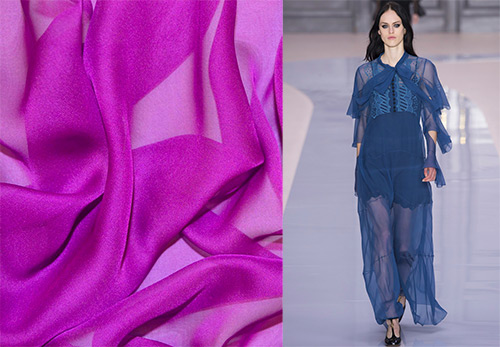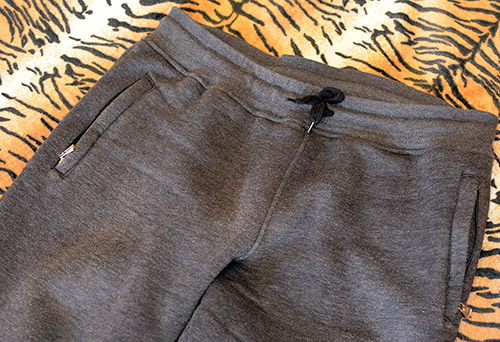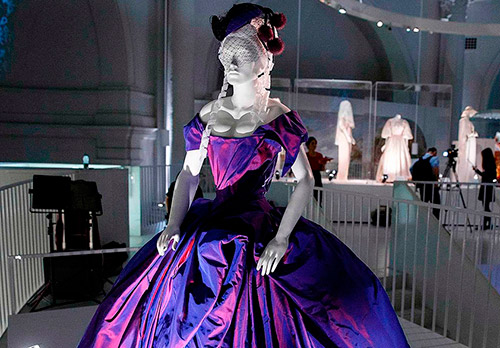Materials Science
Cloth - history, production and application of fabric
Cloth is a woolen or half-woolen fabric of plain weave with subsequent processing, as a result of which the connection of threads is hidden by the pile, moreover, the fibers are so tightly knitted that there is almost no distance between them, therefore the material is very dense and warm. The length of the pile depends on the type of cloth.
Cloth is most often associated with an army material.
From the history of the military uniform it is known that its beauty in Russia was the most important element of the entertainment of military parades and ceremonies. In the first place were the St. Petersburg parades, the brilliance of which was determined by the guard. The chests of most regiments were covered with red cloth, which, combined with gold buttons and white pantaloons, gave an amazingly beautiful sight.
In 1802, soldiers' overcoats made of rough cloth were introduced not only for the infantry, but also for garrison service in bad weather and in winter. Army dragoons in the same year were dressed in double-breasted uniforms of light green cloth, white pantaloons and knee-high boots.


History of cloth production
It began in ancient times. This is evidenced by the excavations of ancient cities. The ancient Greeks and Romans were engaged in the production of cloth. Felting and pressing was done manually. In the Middle Ages, this production was seriously engaged in England, Holland, Saxony, and then in France.
In Russia, the production of cloth was already at the time of Prince Vladimir. At that time, cloth was produced not only for our own consumption, but also for export, but these cloth materials were generally rather coarse, but with a high density, which protected well from frost. Cloth was imported from Europe, most often it was imported from England. In 1650, the first factory for the production of thin cloth was opened in Russia.
At the time of Peter I, cloth production was taken up seriously, because this material was needed not only for caftans, but also for the army. In 1698, the factories of the merchants Dubrovsky and Serikov were opened. They began to produce cloth that was not inferior to the English and German samples.
“What kind of cloth? English manufactories, or do you prefer domestic fabrication? "..." Domestic fabrication, "Chichikov said," ... but only the best sort, which is called aglitsky. " (N.V. Gogol, Dead Souls). Since the time of the Peter the Great's reforms, many varieties of cloths, similar to cloth, have appeared. Only high-quality materials began to be called cloth, and heavier or lighter materials were named - drape, grandfathers, etc.

Cloth production
As already mentioned, broadcloth is a woolen fabric. And the process of making woolen fabrics is quite time consuming. Plain cloth is made from camel or sheep wool... Merino wool is considered the best material for manufacturing.
Initially, the wool is cleaned, washed and degreased. Rinse thoroughly to remove dirt and grease. Then the prepared wool is ruffled on scutching machines. The next operation is combing, after which they spin. Thus, yarn is obtained, and ready-made yarn is scurried on special looms, weaved and felted.
Then they are washed again, after which they paint, nap, cut. Thin cloths are trimmed up to six times, rough ones twice. If the future fabric is supposed to be bright in color, or vice versa, in dark tones, then the yarn is dyed before entering the loom, so that when cutting the fabric, the original color of the wool is not noticeable in the sections. Light-colored cloth is dyed in ready-made fabric. The last step in the production of felt is pressing.

Overcoat and instrument cloth

The Russian Commodity Dictionary for 1889 gives instructions on how to distinguish the highest quality cloth.It says that a cloth of good quality should be soft, dense, strong to the touch, emit a ringing crack or sound when pulled abruptly between the fingers and to break, and also not emit the smell of animal fat (this is a poorly washed cloth).
When stroking the fabric with your hand, you should not feel prickly. N.V. Gogol in Dead Souls describes how the clerk, when Chichikov chose cloth, observed all the details of the ritual ... Home-made cloth was prickly and rough, smelled of animal fat and was more often black, gray or white. That is why at that time it was necessary to sniff, stretch the fabric and examine in the light ...
Properties of the felt
The cloth can be natural or artificial. Natural fabrics are divided into two types: army cloth and city cloth. Military uniforms are sewn from the army. For example, a greatcoat cloth, which should have a high density and protect well from the cold.
Such cloth is used not only for military needs, but also in mechanical engineering, metallurgy and in the chemical industry. This cloth is extremely popular with hunters, as it is not afraid of sparks from a fire, it is waterproof and protects well from the wind. In addition, the greatcoat cloth has a natural odor. sheepsthat attracts animals, especially predators. So this material is one of the most valuable for hunters.

Coats and suits are sewn from city cloth. Depending on the manufacturing technology, there are several types of such cloth: drape, drape-velor, grandfathers, vigone, bieber and others. For example, velor drape is one of the most expensive varieties. It is made only from the finest varieties of merino wool. Drap velor is used for coats, suits and shoes. Felt is mainly used for industrial needs.
Artificial cloth is used in papermaking. Such a cloth is inserted into a paper machine to absorb excess moisture.

There is also a special cloth for billiards, produced according to a special technology, in which the fabric should be softer, the villi are located only in one direction.
Depending on the processing and the quality of the wool used, the cloth can be fine or rough. Finely woven fabrics have the lowest density. They have a pile covering, slightly or even strongly folded, completely or partially covering the weave pattern.
Coarse fabrics are made from thicker yarns and have a higher density.

Cloths can be pure-woolen and half-woolen
Pure wool broadcloths are single-layer fabrics, plain or, less often, twill weave. They are heavily folded with a felt-like covering, which closes the weaves and makes the surface of the fabric matte. Pure wool cloths are used for departmental and military clothing. From them they sew uniforms, tunics, overcoats. Pure wool cloths are used for sewing coats and suits; they are produced in plain dyed, sometimes melange.
Half-woolen cloths are produced from blended yarns, for example, from woolen and viscose fibers, as well as from cotton yarns (in the warp) and blended (in the weft). These fabrics are used for departmental and special clothing.
Cloths have the ability to lay well, since due to the rough surface they do not move in the flooring, they are easy to cut, they are well ironed and pulled back. The latter property is excluded in heavily deformed fabrics or fabrics with a significant amount of synthetic fibers. Another advantage of woolen fabrics is that they do not crumble along the cuts, this simplifies their processing when sewing. Some finely woven fabrics can shrink significantly when wetted.

How to care for your woolen cloth?
The cloth wrinkles, no matter what density it is. Finely woven fabric should only be ironed with a warm iron, otherwise it may burn. Thicker cloth can also be hot. Cloth coats or suits should only be dry cleaned.
Cloth is a popular material in human life.They sew clothes from it and use it for military and industrial needs, and even for entertainment.

Tell friends:
Comments and Reviews
Add a comment
Rating news
Shades of clothing that make women look younger
What shades of hair make women younger: rules and photos
Funny wedding dresses - photos and ideas
12 most expensive down jackets for the winter
How to look 25 at 40: tips from supermodels
Beautiful schoolgirls
Anti-aging haircuts and hairstyles for women
Fashionable skirts for autumn and winter
Fashionable women's trousers for the cold season
Fashionable and stylish sandals for summer 2020
Spring-summer 2021
 Fashionable dresses and tops with thin spaghetti straps
Fashionable dresses and tops with thin spaghetti straps
 Bandana tops: how to wear stylishly and beautifully
Bandana tops: how to wear stylishly and beautifully
 How to put together the perfect men's wardrobe for the summer
How to put together the perfect men's wardrobe for the summer
 Trendy shorts for spring-summer 2021
Trendy shorts for spring-summer 2021
 Fashionable skirts for spring-summer 2021: a guide to online shopping
Fashionable skirts for spring-summer 2021: a guide to online shopping
 The most fashionable dresses spring-summer 2021: styles and colors
The most fashionable dresses spring-summer 2021: styles and colors
 Fashionable total look 2021: image ideas and trends
Fashionable total look 2021: image ideas and trends





